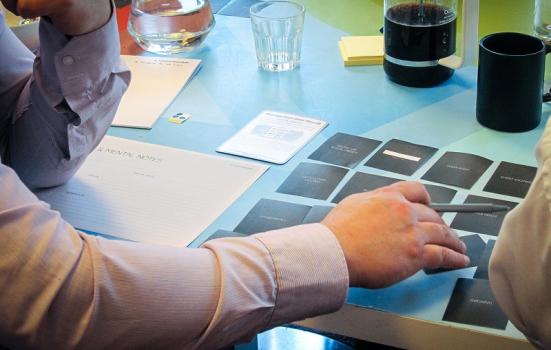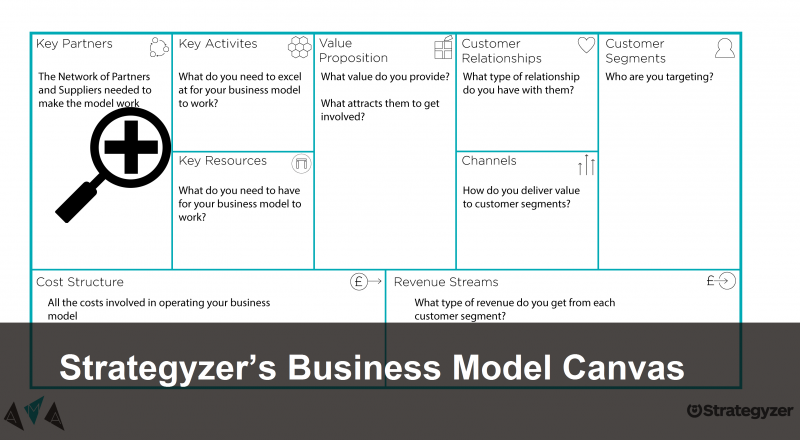A visual business model tool is allowing arts organisations to take a playful and creative approach to planning, says Julie Aldridge.

Innovation Lab via Visualhunt / CC BY
I don’t need to tell you that the world is changing rapidly. It’s clear that the next ten years will not be the same as the last ten. But it’s difficult, if not impossible, to predict and interpret how we need to adapt in response or how we might influence those changes to ensure a successful future.
A couple of years ago I started using Strategyzer.com’s Business Model Canvas and it proved valuable in informing how we shape and develop the Arts Marketing Association’s (AMA) future ambition and direction. So much so that I’ve become quite an advocate for it, and have recently been exploring how the tool, and the thinking behind it, could benefit other arts and cultural organisations of every size and artform.
The canvas is a visual framework formed of nine connected building blocks. It paints a picture of how your organisation works – illustrating how you create, deliver and capture value. It enables us to quickly explore options and ideas.
Reviewing your current model
Once you’re familiar with the canvas and have a rough idea of your current model you can review its strengths and weaknesses. Does it paint a resilient picture for the future of your organisation? Is it desirable? Does your offer inspire and engage? Is it feasible? Do you have the skills, assets and resources needed to bring your vision to life? And is it financially viable?
It’s a playful tool that enables you to see possibilities and reduce risk by highlighting areas that need further exploration before moving forward.
Many of us spend so much time managing the existing plan that we miss a major opportunity or necessity to evolve. No one would write a full business plan and then throw it away because one element of it doesn’t work. Instead, it sits on a shelf and no one uses it.
A playful approach
If we didn’t have a venue would we still be a museum? If we started again from scratch would we still create the same offer?
The canvas enables us to follow a more creative, playful approach. Thinking like a designer or architect, you make quick sketches of ideas, prototyping the most viable, and testing any assumptions. It’s an iterative process.
Throw away the ideas that don’t work, sketch new ones, and adapt them in response to insight generated from testing, before committing to a particular direction. And then write the business plan if you still need to.
We can explore the pros, cons and full implications of different approaches – the impact of a move away from being a free entry museum, for example. We can use it to inspire how we might better meet the needs of today’s diverse society. What’s missing in our current approach? What are the implications of opening up the organisation? How might new partnerships influence positively and negatively? What impact do we want to have?
The canvas enables you to quickly consider those outrageous extremes that you would probably never adopt. Quickly sketching out how they would affect each element of the business model can spark debate and potentially open up new ideas that just might be feasible. If we didn’t have a venue would we still be a museum? If we started again from scratch would we still create the same offer?
Focus on values and purpose
There is much confusion about what a business model is. The authors of the canvas describe it as “…the rationale of how you create, deliver and capture value”. In other words, it covers the totality of your organisation, not just its financial strategy.
When considering future resilience, it is vital to map out the full model. Adding a new income stream may look like it provides a short-term solution, but each income stream that you add to the model adds complexity. Are there any elements of your current approach that generate income but don’t deliver on your values or core purpose?
Here are a few final tips:
- Don’t fall in love with your first idea.
- Take everything you note on the canvas as a hypothesis.
- Expose your ideas to others early and seek responses from a range of people.
- Re-examine any assumptions.
- Review your limiting beliefs.
Julie Aldridge is Executive Director of the Arts Marketing Association.
www.a-m-a.co.uk
E: Julie@a-m-a.co.uk
Tw: @Julie_Aldridge
Tw: @amadigital
For more information on the business model go to CultureHive or view a series of case studies from arts organisations in the process of reviewing their model. AMA has also created three online Building Resilience modules.





